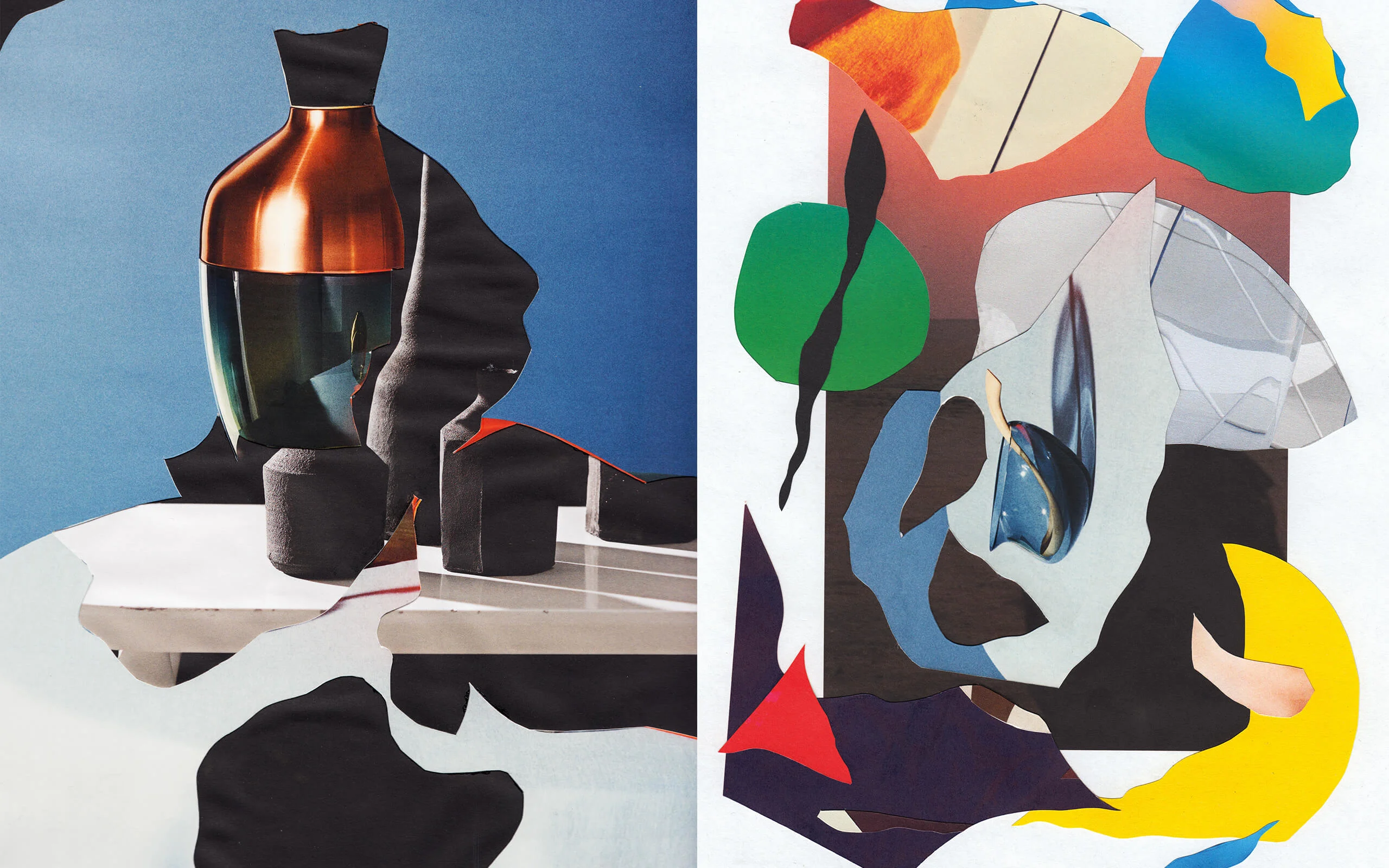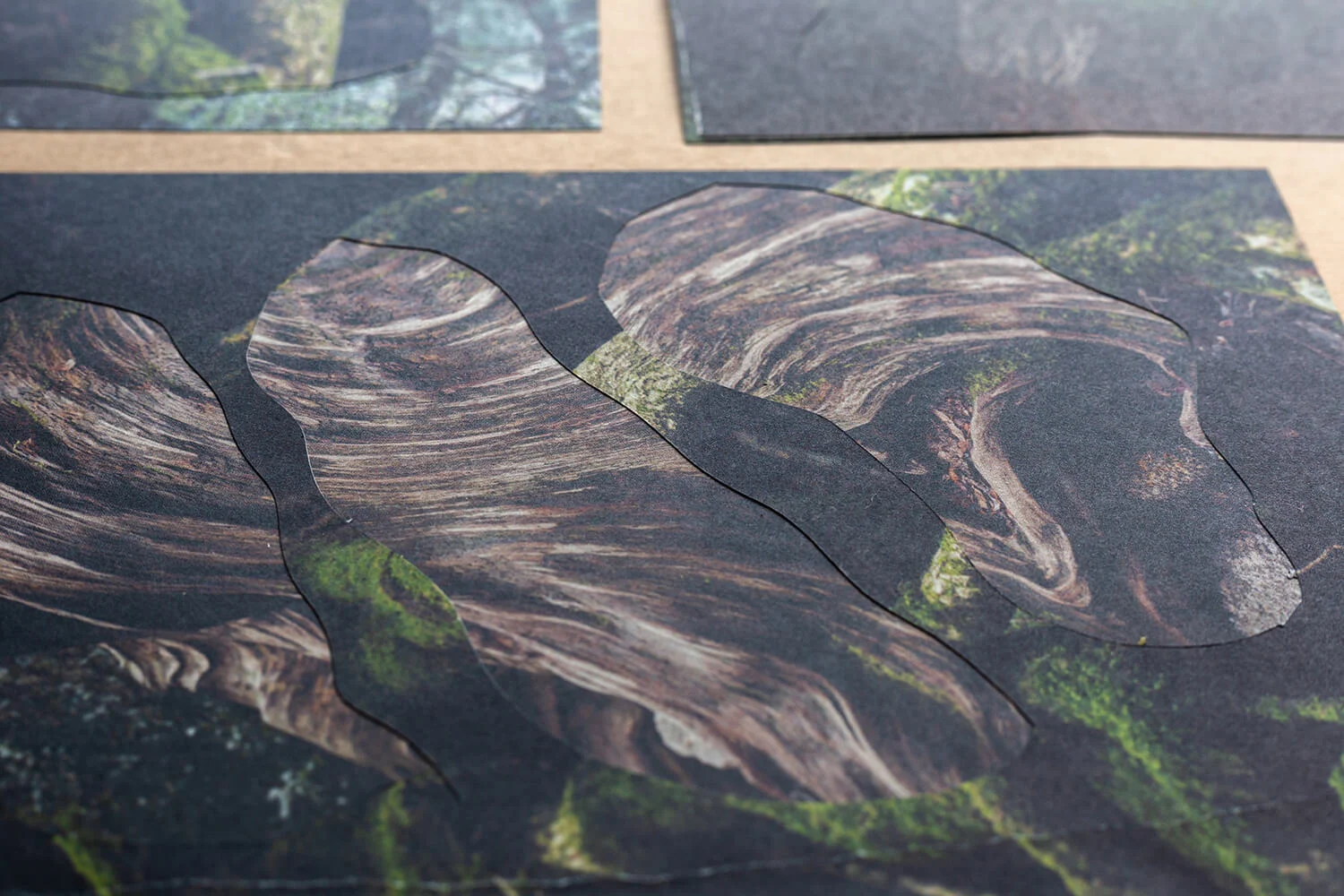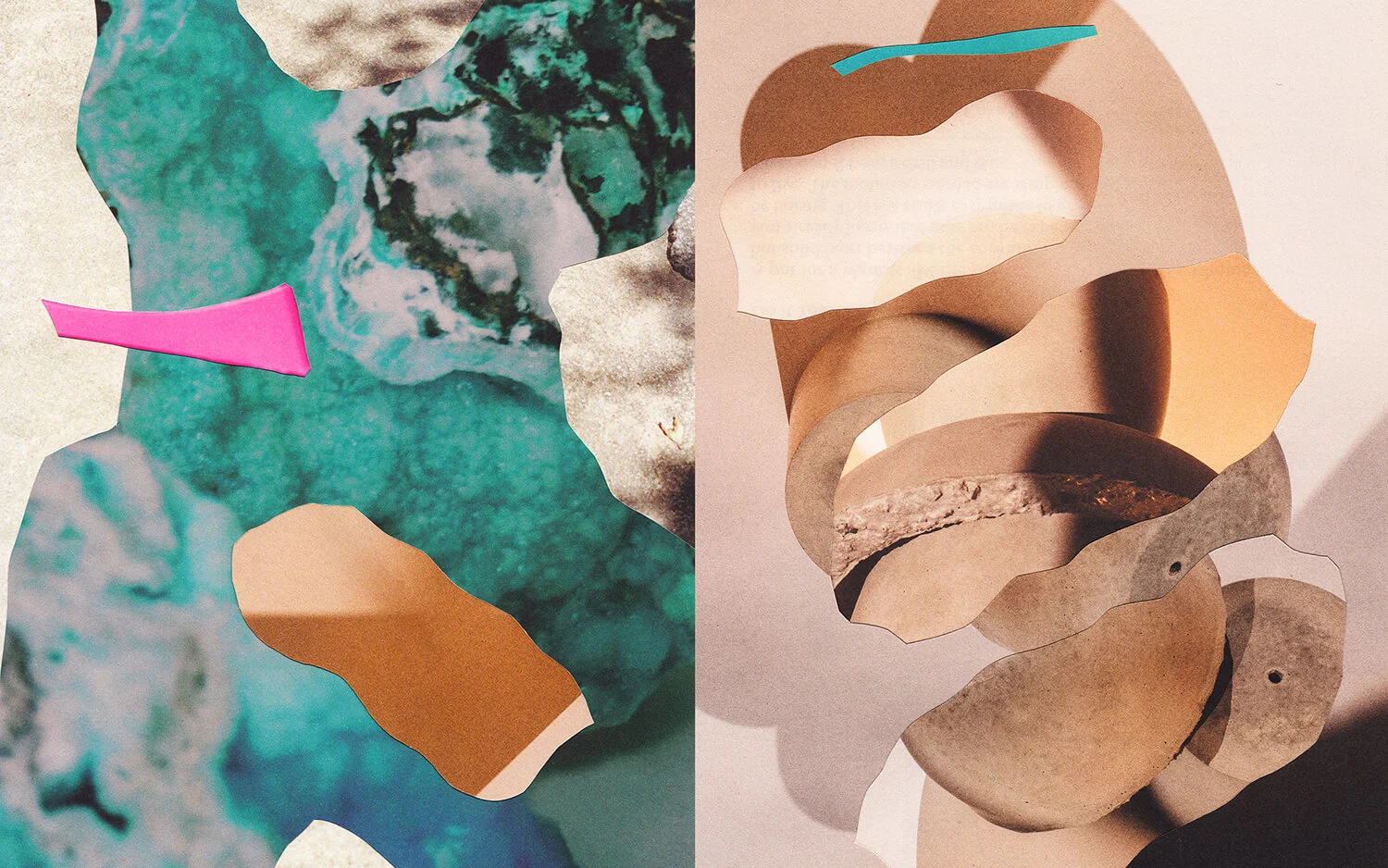

When Jack Samels sleeps, he dreams about the shapes and colors of his collages, the forms dancing behind his eyes. “The energy of them wakes me up in the morning, because they are an endless feeling that is timeless and pure,” he says.
After getting out of bed, alone in his studio, Jack turns up the music and does a little dance while cutting shapes for his collages. He describes his paper artworks as gestural, his cutting action emotional and quick. “I just get excited!” he says. “I think the gestural nature of physically cutting helps arrange the pieces into visual poems.”
It was in high school art class where Jack first started doing collage. “I liked recycling material into a new context,” he says. In college he started weaving strips of images into his own photographs “to create a glitch effect, a scrambled signal, a tear in reality.”

Now he thinks of his collage work as painting with found ink. Instead of working from a blank canvas, his materials are images that already exist and offer him multiple possibilities to remix and create new meaning. “I found freedom in the limitations of paper and glue,” he says.
The collage process begins with browsing the shelves at magazine stores. Sometimes Jack buys a magazine for one single image printed on one of the pages. He brings his haul back to the studio – an abandoned sporting goods store – where he takes apart the spine and rips out every single page.




But not every sheet makes the cut. “I throw away pages that distract me or pictures that annoy me.” The rest he cuts into backgrounds or smaller shapes for the upper layers, laying it in front of him to see them all at once.
He makes different collages at the same time, working quickly without thinking too much. Sometimes when he thinks he’s done for the day, he’ll notice a scrap of paper on the floor, sparking a whole new direction. “They are visual experiments; when I try to plan abstract things it usually derails.”
The elements he’s attracted to have changed over time though. “I read once that as you age, you move from liking even numbers to odd,” he says. “I used to hate orange but now I am deeply drawn to it. I find myself liking hard edges more, and the space between pink and white.”



In his series Chrome Pretzel, metal pipes create contraptions folded over and under one another. “It was fuelled by an obsession of the behavior of light waves that carry color and shape to our brains,” Jack says. “The metal pipes and tubes function as convex mirrors, absorbing the scene around them and reflecting a complex tangle of color and form that is further woven by my physical layering of paper in the studio.”
Jack used his own photographs as the base material for the series. “Using the photography of others to create my compositions ultimately feels like writing a poem with someone else’s sentences,” he says. “A deeper level of ownership arose from making and physically cutting my own photographs.”

In his series Vessels, Jack was drawn to textures like wood, stone, metal, glass and ceramics. In some of the pieces he's used recognizable objects, like a wine glass, a decorative vase or glass domed paperweights. Other artworks are a medley of cuttings making the source material completely abstract. It’s an artful balance between new and familiar through which Jack hopes to “elicit the vague shape of memory.”
After a piece is final, Jack titles it. For over ten years he has been obsessively archiving written notes, photos, poems, scribbles and doodles. He’ll dive headfirst into these clippings to pull out words that match the feeling of a piece. “I quickly write a poem that is hovering in my brain like a little angel fart.”
Words by Alix-Rose Cowie


